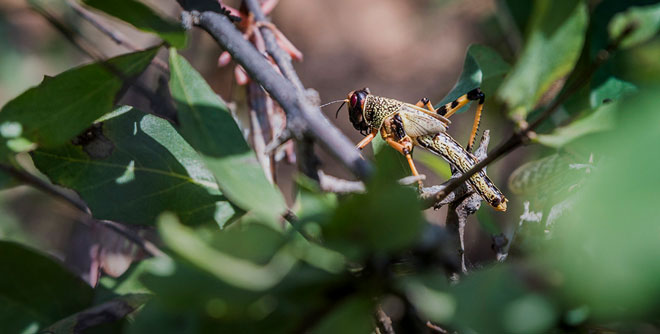
Uganda seeks UGX 16 Bn to recoil hatching locusts eggs

Kampala, Uganda | THE INDEPENDENT | The government is seeking an additional 16 billion Shillings to deal with hatching eggs of deserts locusts that have infiltrated several parts of the country.
Agriculture Minister Vincent Bamulangaki Ssempijja told journalists in Kampala that a technical field expert team which was sent to neighbouring Kenya has confirmed that the locusts had hatched in billions in almost the whole of Turkana, an area closer to Uganda’s Karamoja region.
The news of hatching locusts presents serious consequences for Uganda, after close to three weeks of the first invasion through the Karamoja region. The migratory pests were first reported in Uganda on February 9, after crossing the borders from Kenya, where the worst infestation was reported in 70 years.
Researchers say that a solitary female desert locust lays about 95-158 eggs. According to the Food and Agriculture Organisation, the locusts lay at least three times in their lifetime usually at intervals of about 6-11 days. Their eggs hatch in about two weeks.
Sempijja says Uganda needs to take precaution and prevent a possible catastrophe’.
The desert locust is considered the most destructive migratory plant pest in the world. A small swarm covering one square kilometer can eat the same amount of food in one day as 35,000 people. Under the right weather conditions, they reproduce rapidly and the population could multiply 500 times in the next six months.
Ssempijja says that based on this, Uganda needs funding to a tune of 5.6 billion Shillings to buy more chemicals from Japan and nine billion Shillings to support operations by the Uganda Peoples Defence Forces on the ground and engage lower local councils, to avert a possible threat that the locusts present to Uganda.
In the initial response to the invasion of desert locusts, the government earmarked 15 billion Shillings. Later another allocation of seven billion Shillings was made to boost interventions as the pests migrated to various parts of the country.
Ssempijja says that the existing swarms are classified as mature adult locusts that are mainly laying eggs and that the technical team in the field anticipated that the first swarms that invaded the country earlier, laid eggs which may hatch into hoppers, the most destructive stage of the desert locust life cycle.
Reports indicate that another swarm of locusts entered Uganda through Nakabaat in Rupa sub-county, on Monday.
The East African region had already suffered damage as a result of the locust invasion in recent months. FAO anticipates that there are potentially severe consequences for the region where millions rely on agriculture and livestock rearing for their survival, unless if interventions are made to control further reproduction of the locusts.
FAO has now raised its appeal to USD 138 million, from the initial USD 76 million a month ago, in urgent funding to assist the countries that have been impacted. These countries include Uganda, Kenya, Ethiopia Somalia, Djibouti and Eritrea, Tanzania and South Sudan. So far USD 33 million has been pledged or received.
******
URN
The post Uganda seeks UGX 16 Bn to recoil hatching locusts eggs appeared first on The Independent Uganda:.
0 Response to "Uganda seeks UGX 16 Bn to recoil hatching locusts eggs"
Post a Comment